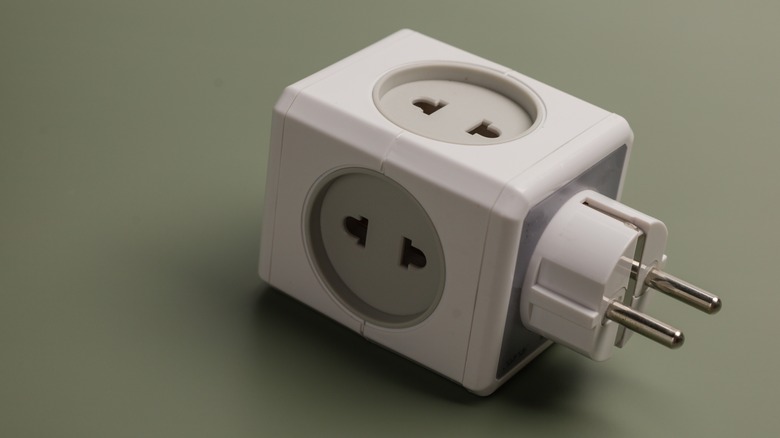We may receive a commission on purchases made from links.
On the internet, the universal travel plug adapter looks like a dream. Look at all those prongs and cavities! See how every inch is put to good use! And the design — a perfect cuboid, easy to slip into a jacket pocket or suitcase! This is technology at its smartest, both versatile and portable. Now you can travel anywhere in the world, recharge any device in your possession, and all because of this universal adapter!
You wouldn’t be alone; so-called universal adapters are sold all over, and they look even better on physical store shelves. When you hold one in your hand, just days before jetting to Europe or Asia, such devices seem to solve all your problems at once. Tech gadgets are important, after all, especially smartphones. You may need your phone to navigate, translate, track down activities, and confirm reservations. In theory, these kinds of adapters should work anywhere, including hotel lobbies and cafés, where you can discreetly plug into wall sockets and rescue a dying battery. You don’t have to worry about tangling lots of chargers when you pack. You can cross borders with ease, confident that wherever there is an electrical current, you can harness it.
Well, not exactly. Universal adapters may work, but the very name is false advertising: These adapters are not “universal,” and no gadget on the market deserves this title. The problem isn’t adaptability; they’ll connect to just about any kind of socket. The problem is the voltage; in many nations, the electrical current is roughly twice as powerful as in the U.S. “Universal” adapters don’t convert the flow of power; by plugging in, you risk frying your phone or tablet.
The adapters to use instead when traveling abroad
Don’t fret: Lots of adapters still work, but you’re wise to take it one country at a time. Headed to France? Find an adapter specifically designed to connect plugs from your home country to two-prong French wall sockets, such as the Tessan European plug adapter. The same adapter should work for Spain and Italy, as most members of the European Union share a voltage of 220 volts. Later, when you head to China, find a similar adapter for the country’s three-prong sockets (operating at 220 volts), like this one from Ceptics. Interestingly, Chinese adapters should also work in Australia and New Zealand. All this moving around will require some research ahead of time, but no more so than currency exchanges or overcoming jet lag.
There’s another device that may come in handy: the power strip. Widely known as a “surge protectors,” this skinny apparatus has a cord and usually lives under office desks. The surge protector is designed to do exactly that — protect your devices from sudden electrical surges. Models like the Unidapt International Power Strip are designed for European travel, and they come with multiple U.S. sockets and USB ports as well. They’re affordable to buy and simple to use, and they take up only a little more space in your luggage than those “universal” adapters. You can charge multiple devices at the same time, and the surge protector can handle a current of 100 to 240 volts. Any of these items should help you when you arrive at your destination; until then, make sure your electronic devices are fully charged while going through TSA, for this unexpected reason.



